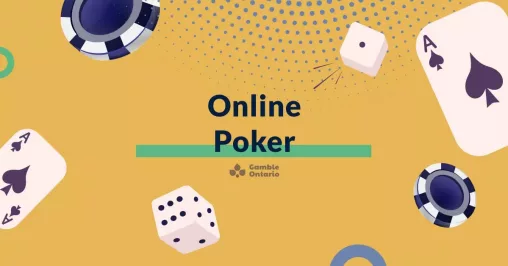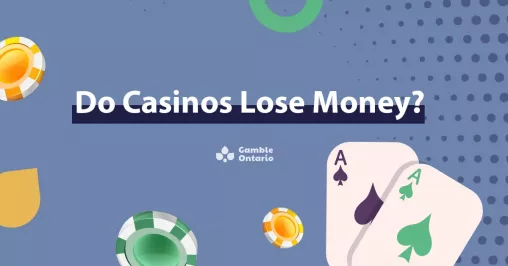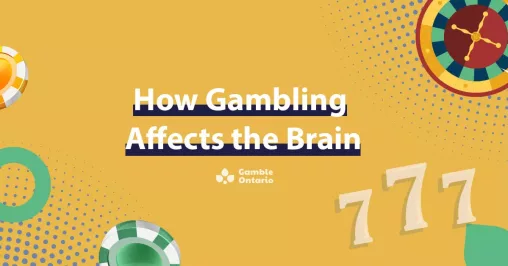How to Play Blackjack: Rules, Hand Types, Side Bets & More
If you’ve landed on this page, we’re going to assume you don’t know how to play blackjack. In our comprehensive guide, we won’t just explain the rules of this classic casino game. We’ll also detail the many different formats, break down how popular side bets work and talk about card counting. Once you finish reading this guide, you may want to discover the best blackjack casino sites to play legally in Ontario.
🔍 Introduction to Blackjack
Blackjack is a game that’s easy to pick up but requires skill and practice to master. Unlike some other online gambling games, you really can master it. Thanks to decades of research and computer simulations by people like Edward O. Thorp, we have completely solved the optimal blackjack strategy. It’s possible to win money from blackjack in the long run. Combining basic strategy with card counting techniques can turn blackjack into a positive expectation game. This is undoubtedly part of the game’s seemingly everlasting appeal. That and several high-profile movies showcasing the game, such as Rain Man, 21 and Croupier.
Blackjack Objective
This all-time classic table game has a simple objective: beat the dealer’s hand without going over 21. There’s no need to worry about the other players at the table since you’re all looking to beat the house. If you’re successful in your mission, you’ll bank an even money payout. But if you’re lucky enough to make a natural blackjack – an exact score of 21 from your starting hand – you’ll receive an additional perk! Several blackjack variants offer additional side bets and subtle rule twists.
📜 Blackjack Game Rules
In this section, we’ll learn how to play a standard blackjack game. As we’ve mentioned, the aim is to achieve a better score than the dealer without being disqualified. You can use as many or as few cards as you like to accomplish this feat. As soon as you score over 22, you’re eliminated. If you elect to stick with what you’ve got, you’ll need to hope that the dealer’s final hand value is lower than yours. The dealer can also bust if they score 22 or more. And if your hand value is identical to that of the house, we have a tie, usually called a “push.” Here, you’ll get your money back.
Deck Cards
Blackjack is almost always played with multiple decks of cards. It’s possible to find games using a single pack, these are rare since the one pack increases the player’s likelihood of winning. You’re likely to play with a shoe that contains 6 or 8 standard decks of cards. Jokers are not used when playing blackjack.
Chip Value
The value of your chips depends upon the casino. Online gambling sites make things easy by clearly displaying chip denominations on your screen. But at some land-based venues, the chips don’t necessarily have obvious values. In Las Vegas, chips are coloured consistently. A red chip is worth C$5, with green chips valued at $25 and blacks at $100. This is not true of every brick-and-mortar casino around the world, so be sure you understand how much you’re betting.
Settlement
After the hand is over, anyone who successfully bettered the dealer’s score is paid accordingly. We’ll talk in detail about settling side bets later in the article. But for the main blackjack bet, winners are paid at 1 to 1. So a winning bet of C$10 would secure a profit of C$10, a total return of C$20. The exception to this is when a player is dealt a natural blackjack. This is a score of 21 featuring an Ace with either a Ten or a face card.
🃏 Blackjack Cards Value
In all forms of blackjack, each card has a specific value. Players initially receive two cards face up on the table, and their scores are added together. Based on this initial value, you’ll need to make your playing decisions. Any further cards received are added to the initial total until you go bust – acquire more than 21 points – or elect to stop. Here’s what each card in the deck is worth:
- The Ace: An extremely valuable card, Aces are worth 11 points. They change to just 1 point if it suits you. For instance, if you have 15 and draw an Ace, the new total of 26 would be too many. In that case, the Ace becomes 1 for a valid score of 16.
- Face Cards: Each of the royalty cards in the deck scores exactly 10 points. The colours and suits are irrelevant. As long as it’s a Jack, Queen or King, it’s worth 10.
- 10 through 2: Every other card in the blackjack shoe keeps its face value. That means a 10 scores 10 points, a 9 scores 9 points, and so on.
🟥 Hand Types
Blackjack uses a lot of terminologies when describing different types of hands. This part of our guide addresses these hand descriptions.
Soft Hand
If a blackjack hand contains an Ace and can play as two different values, it is said to be “soft.” Imagine the second card is a 4. Due to the presence of the Ace, this hand could be worth 5 or 15 points. So it is described as “Soft 15“.
Hard Hand
The opposite of a soft hand is a “hard” hand. Any starting hand without an Ace is naturally classed as hard. But soft hands can become hard when further cards are taken. Continuing the above example, if you chose to hit and received a 9, your hand’s total would either be 14 or 24. Since 24 is not a valid hand, you now have “Hard 14“.
Push Hand
The result is a tie whenever your final score is exactly the same as the dealer’s score. This type of hand is known as a “push,” and you will receive a refund on your bet.
Bust Hand
Whenever you score 22 or more, you’re said to have gone “bust.” It’s simply not allowed to score above 21 in blackjack. Don’t forget about soft hands, though. If one value is higher than 21, the lower score plays.
🎴 Blackjack Example Rounds
A hand of blackjack, with just one player and the dealer, it looks something like this:
- Before the game begins, bets are placed. You decide to ante C$20.
- You are dealt an 8 with a 3 for a total of 11 and are facing a 5. Naturally, the dealer’s second card remains hidden from view.
- Opting to Double Down, you pay a second ante of C$20 and receive a 2 for a final total of 13. Not good!
- The dealer reveals their hole card, which is a 7 for a score of 12.
- In line with the game’s rules, the dealer draws and receives a King; that’s 22 and the dealer busts. You win!
- The dealer pays you 1 to 1 on both of your bets for a return of C$80.
All the cards used in that round are discarded and not shuffled back into the shoe. You elect to bet another C$20. Here’s how the next round might play out:
- Your cards are 5 and a 3 for a score of 8. The dealer shows a Queen.
- You hit and are dealt a 9; that’s 17, and you choose to stand.
- The dealer turns over their face-down card, and it’s a Jack; they have a score of 20.
- Since you lost, no payouts are made and all cards used are discarded.
❗ The Blackjack Dealer – What Does the Dealer Do?
Dealers are responsible for distributing the cards, keeping the action flowing and paying out bets. Everyone at the table is betting against the dealer’s hand. When playing a new round of blackjack, the dealer hands out two cards to everyone. All players receive theirs face up, while the dealer gets one up and one down. The dealer then proceeds to ask the player in seat one, to the dealer’s immediate left, what they wish to do. Their role is to ensure everyone understands their options and follows the rules. At the end of the game, prizes are paid out by the dealer. They are also responsible for shuffling the cards.
💡 Blackjack Strategies
Newcomers to the blackjack table often seek information and advice about how to approach the game. So in this section, we’ll talk about playing strategies.
Blackjack Basic Strategy
Statisticians, mathematicians and gamblers alike have all tried to develop a perfect strategy. And this was successfully achieved with the help of technology. Today, blackjack is a solved game. It’s possible to find an abundance of charts online showing the correct play in every situation. This is referred to as “basic strategy,” and if you follow it flawlessly, you can reduce the house edge to around 0.5%. When playing online, it’s easy to consult such reference materials. If you’re playing in a physical location, be careful, as this might be frowned upon by the staff. Try to commit the strategy to memory instead through practice. Here are 5 of the finer points of basic strategy to help you get started:
- Always stand on 17.
- Double down with a 10 against any card except a 10 or Ace.
- Without exception, double down on 11.
- Always hit with 8 or less.
- Split Aces and 8s every time.
Blackjack Advanced Strategy
Despite the counter-intuitive name, the basic strategy is actually the most advanced way to play blackjack! If you learn card counting techniques, you can gain an edge over the casino. Card counting is most often associated with blackjack. But in theory, it could be used to aid your betting strategy in other card games. By keeping track of the cards which are no longer in the shoe, you can adjust your wager sizes in certain spots. If you’re much more likely to receive a favourable card, taking advantage of this situation can be profitable.
🚀 Most Popular Blackjack Variations
There are dozens of innovative blackjack variations these days, thanks to the growth of online casinos. Here are some of the most popular formats.
American Blackjack
If you’ve ever played a casual game of blackjack, the chances are it was the United States version. The usual rules are as we’ve described in this article, but crucially, American Blackjack includes the insurance bet.
European Blackjack
Aside from a few minor differences, American and European blackjack are fundamentally the same. In the European format, popular in France and the UK, the dealer does not check for a blackjack, so there is no insurance. Further, it’s possible to split pairs as many as three times in succession, as opposed to just once in the American game.
Vegas Strip
This is an online variant of blackjack created by Switch Studios in partnership with Games Global. It aims to mimic the American land-based version, including insurance, with an RTP of 99.65%. In addition, it is one of the few online blackjack games to offer the early surrender rule.
Blackjack Switch
A fun blackjack variant with an RTP of 99.87%, Blackjack Switch is one of several games patented by Geoff Hall. Participants are obligated to play two hands at a time. However, it’s possible to swap the top cards between hands, creating two entirely new hands. Natural blackjacks only pay 1 to 1 because the player receives such an advantage.
Multi-Hand Blackjack
In Multi-Hand Blackjack, as the name implies, you can play as many as five hands simultaneously. It can be found at almost all Ontario’s best online casinos and follows traditional American blackjack rules.
Spanish 21
A Spanish deck contains just 48 cards as the 10s are removed. A version of blackjack played with such a deck is known as Spanish 21, and it features several unique rule variations and gameplay elements.
🚩 Blackjack Side Bets
Most blackjack games offer side bets, whether online or in a physical casino. These are optional wagers that help to spice things up. In this section, we’ll discuss the most common blackjack side bets.
Insurance Bets
Many blackjack variants offer insurance, but not all. If permitted, you’ll be offered the choice whenever the dealer’s face-up card is an Ace. This means the risk of the dealer having a blackjack is now extremely high. So the probability of losing is big, even if you end up with a perfect score. As such, you can opt to buy insurance. You must pay half of the bet in play to cover the cost of this additional wager. And if the dealer is shown not to have blackjack, the insurance bet is lost. If the dealer shows blackjack, your insurance wins and is normally paid at odds of 2 to 1.
Perfect Pairs
The Perfect Pairs side bet pays out based on the player’s initial two cards being a perfect match. While a mixed pair or a pair of the same colour will still earn you a prize, it’s the exact match (same rank, colour and suit) that is most prized. Every casino treats this side bet differently, but the most common pay table looks like this:
| Perfect Pair (e.g. 6♣ 6♣) | 30 to 1 |
| Same Colour (e.g. A♦️ A♥️) | 10 to 1 |
| Mixed Pair (e.g. 8♣ 8♦️) | 5 to 1 |
21 + 3 Bet
This particular side bet takes your initial two cards and combines them with the dealer’s face-up card. If the resulting three card hand forms any of the following, you’ll receive a payout on your wager. This is an example of a common 21 + 3 side bet pay table, but every casino is different.
| Suited Three Of A Kind (e.g. 2♦️ 2♦️ 2♦️) | 100 to 1 |
| Straight Flush (e.g. J♣ T♣ 9♣) | 35 to 1 |
| Three Of A Kind (e.g. K♠️ K♥️ K♦️) | 33 to 1 |
| Straight (e.g. 6♠️ 5♥️ 4♣) | 10 to 1 |
| Flush (e.g. A♥️ Q♥️ 3♥️) | 5 to 1 |
Easy Match
A very simple blackjack side bet, “Easy Match,” is not especially widely seen at the blackjack tables. All you need to do to win is receive two cards of the same suit. They don’t need to match in any other way; they only have to be suited. The Easy Match bet pays a return of 3 to 1. But if the game uses just a single deck, that payout is reduced to just 5 to 2.
Royal Match
Another less common blackjack side bet, but one that’s good fun, is the “Royal Match” wager. Whenever your starting hand is the King and Queen of the same suit, you’ll secure a payout of 25 to 1. Unless you’re playing a single deck variant, in which case it will be around 10 to 1.
#️⃣ What Is Card Counting in Blackjack?
Counting is a way to track how many favourable cards remain in the shoe. There are many different methods, but all share some common features. Cards are assigned nominal values, which allow the player to keep what is called a “running count.” Next, the running count must be converted to a “true count” via some mathematical formula. Finally, the bet sizing is adjusted in accordance with the true count. If we look at the Hi-Lo system, for example, cards are assigned the following values:
- Ace to Ten: -1
- Nine to Seven: 0
- Six to Two: +1
If the running count is high, meaning a large positive value, the shoe is loaded with cards that are good for the player. That is Aces and Ten-value cards. This means it’s a good time to increase your bet sizes and cash in!
Popular Card Counting Systems
If you’d like to learn more about card counting, try researching some of the below systems.
- Hi-Lo
- Red 7
- Omega II
- Knockout
- Hi-Opt I
- Hi-Opt II
- Zen Count
- Wong Halves
- Uston Advanced Point Count
❓ How to Play Blackjack FAQs
Is it better to play 1 or 2 hands in blackjack?
If you understand the perfect strategy and can count cards, it makes sense to capitalize by playing two hands. For casual gamblers, though, two hands will just speed up the rate at which you lose.
How to play blackjack and win?
Learning basic strategy decreases the house edge from around 2% to as low as 0.5%. Throw card counting into the mix, and it’s possible to make long-term profits from blackjack.
How do you play basic blackjack and win?
Basic blackjack involves following optimal strategy. This greatly reduces the casino’s advantage. But like all casino card games, blackjack involves random chance, so there’s no way to guarantee a winning session.
What are the rules for blackjack?
The object of the game is to beat the dealer without going bust, for which you’ll earn a payout of 1 to 1. For a more detailed guide to blackjack rules, see elsewhere in this guide.
How does 21 + 3 blackjack work?
This side bet takes your initial starting hand and the dealer’s upcard to form a three-card poker hand. The better the hand, the greater the returns. Scroll up the page for more details, including 21 + 3 payouts.
What are the tricks to playing blackjack?
Concentration, discipline and hard work are crucial. Practise playing basic blackjack strategy flawlessly. If possible, learn to count cards. Understand that you will still have some losing sessions.
When to play insurance blackjack?
Purists will say that you should never take insurance. Successful wagers pay 2 to 1, but the true odds against this are 9 to 4. Therefore, insurance is a bad bet.
📘 More Casino Table Game Guides






Dominic is an experienced gambling industry professional with over 15 years of experience across various operational and product roles. He has launched retail sportsbooks and online wagering sites for gaming giants across Africa and Southeast Asia. Much of his content focuses on the Ontario iGaming scene, including casino & sportsbook reviews and local gambling laws.









